Founded in 1912 on the original plat of William Ladd’s Hazel Fern Farm, Laurelhurst was developed to be an example of the potential for European “garden suburbs” close to the city. An eclectic variety of architectural styles, from “fairyland” bungalows to quaint English cottages to the more classic Dutch Colonials, was chosen as a set of prototype designs for the creation of this community-centered neighborhood. To this day, many of these homes still exist, as does the pre-intended sense of comradery between its residents.
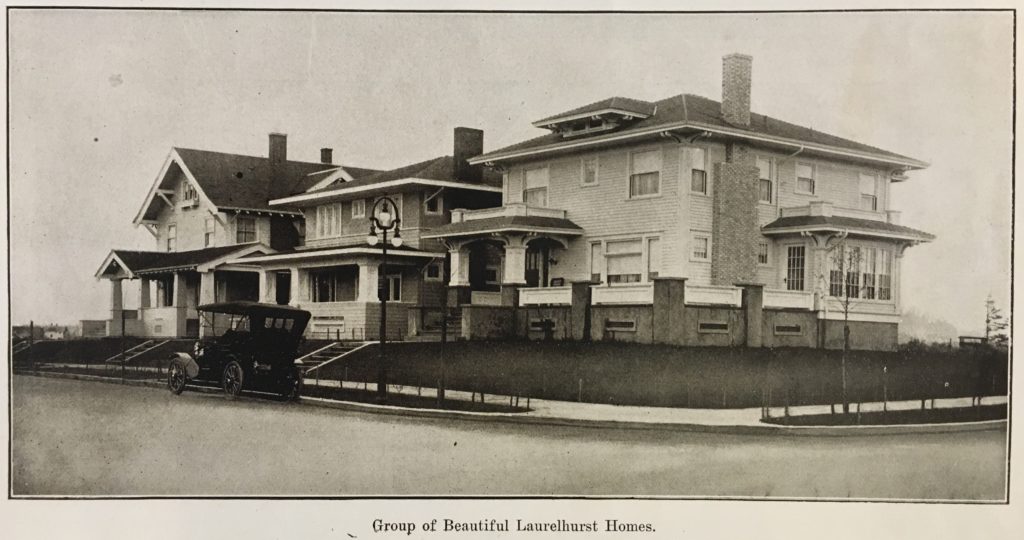
WHAT IS THE LAURELHURST SURVEY PROJECT?
Peter Meijer Architect, PC (PMA) is in the process of conducting a Reconnaissance Level Survey (RLS) of the Laurelhurst neighborhood in Portland, Oregon. Data from the survey will be used to prepare a potential historic district nomination of the neighborhood. A great deal of research was necessary to understand Laurelhurst’s general historical context prior to beginning survey fieldwork involved in the RLS. We began by reviewing all previous documentation that has been collected of the neighborhood—including historic tax records, Sanborn maps and other graphic data, newspaper articles from historic periodicals, and the City of Portland’s Historic Resource Inventory. We also reviewed context statements that had been written for earlier historic district nomination efforts, and primary source documents that had recorded Laurelhurst during its early stages of development.
The primary objective of a Reconnaissance Level Survey (RLS) is to provide a “first cut” of typically residential resources within a given area that appear to meet the survey criteria for historic significance. An RLS involves only a visual evaluation of properties in relation to the overall neighborhood context, not an assessment of associated historical events or individuals connected to the property.
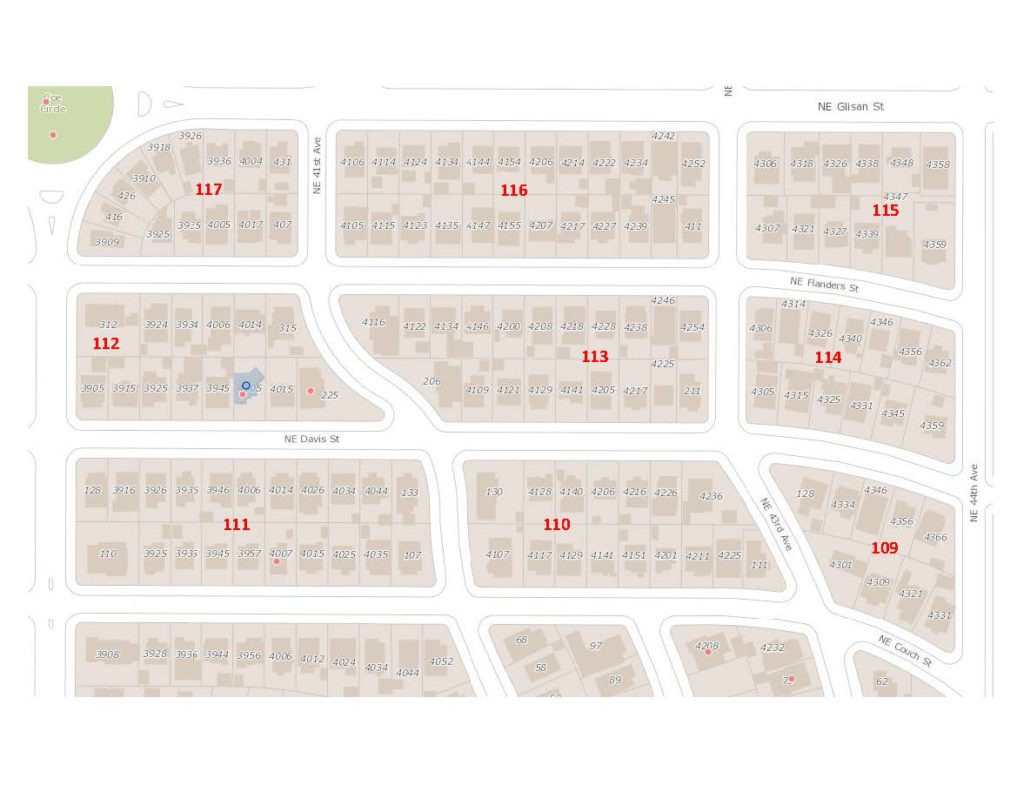
With the information gathered from our preliminary research at hand, PMA set out in November 2017 to survey approximately 1800 properties that were constructed during Laurelhurst’s period of significance. Our approach will be informed by information gathered during our research and any additional background information provided by Laurelhurst residents’ initial observations. Factors includ¬ing potential eligibility, typographical distribution of resources, integrity of setting, and proximity to other resources will be considered when selecting survey properties.
So far, we have completed 70 percent of the total survey area. As Laurelhurst consists of approximately 1,800 properties, we still have a large number of houses to go!
There are distinct characteristics within Laurelhurst that are well known to residents and visitors. The inclusion and extent of these characteristics, like street patterns, open spaces, landscapes and trees, objects like sculpture, lamp posts, etc. will be discussed with the LNA, the City, and the State Historic Preservation Office (SHPO) to determine the importance of the characteristics in telling the story of Laurelhurst.
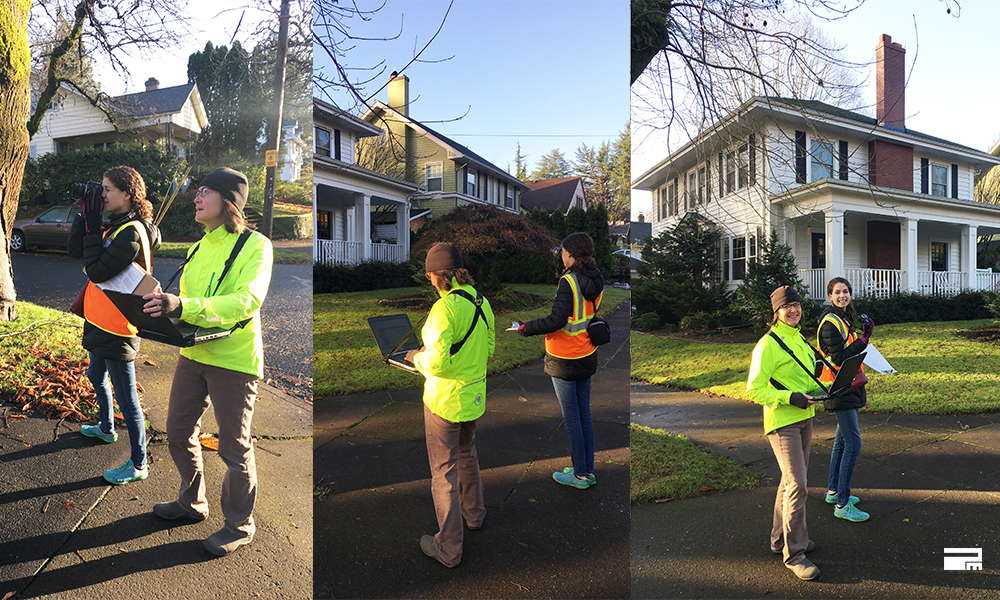
SURVEY PROCESS TO DATE
PMA project staff has been working with a taskforce of volunteers—residents of the Laurelhurst neighborhood and preservation graduate students from the University of Oregon. To date we have finished surveying three of five sections of the neighborhood. The in-field survey will be completed by late Spring 2018. Some properties have been noted as potential opportunities for an Intensive Level Survey (ILS), in which a more detailed review of the property would yield further information of its level of historic integrity and the significance of Laurelhurst as a whole. Intensive Level Surveys, if any, will also be completed by late Spring 2018. PMA aims to have a first-draft nomination ready for the Laurelhurst Neighborhood Association by June 2018.
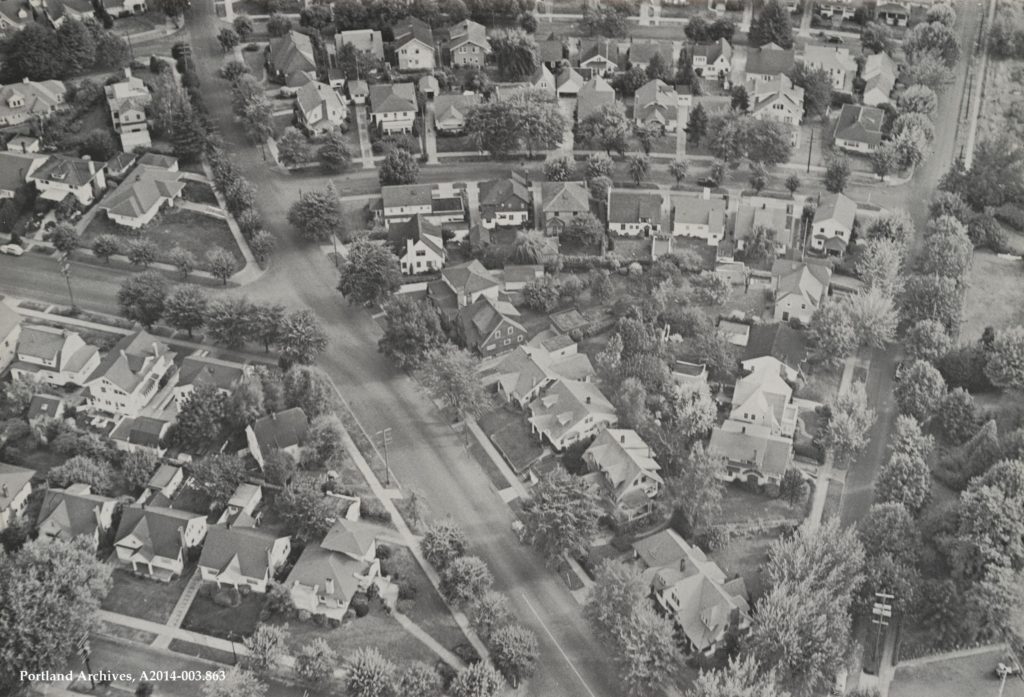
Challenges
The main challenge has been the large size of the survey area, the fact that we have a limited number of staff and volunteers, and walking around all day. The weather has also been difficult at times—with very cold temperatures, rain and snowfall. Dry days at this time of the year are hard to come by, but they are ideal because many leaves have fallen from the trees that block visibility of the houses and lighting is always better on a gray day.
Community Interaction
Many residents of the area have already conducted their own research on the history of their houses, and many have shared with us their findings. Of the stories we have received, we learned of a cluster of houses owned by many generations of the same family, one woman who met the famous architect that designed her house, and a man who has nurtured a dilapidated house back to life. We encourage anyone who may have more information about the history of development in Laurelhurst to contact us as well.
Interesting Resources
We have collected a number of historic photographs of Laurelhurst homes from multiple sources, including a 1916 Brochure of “Laurelhurst and its Park”, and have had a lot of fun tracking them down. Some have been demolished, but there are still MANY that exist.
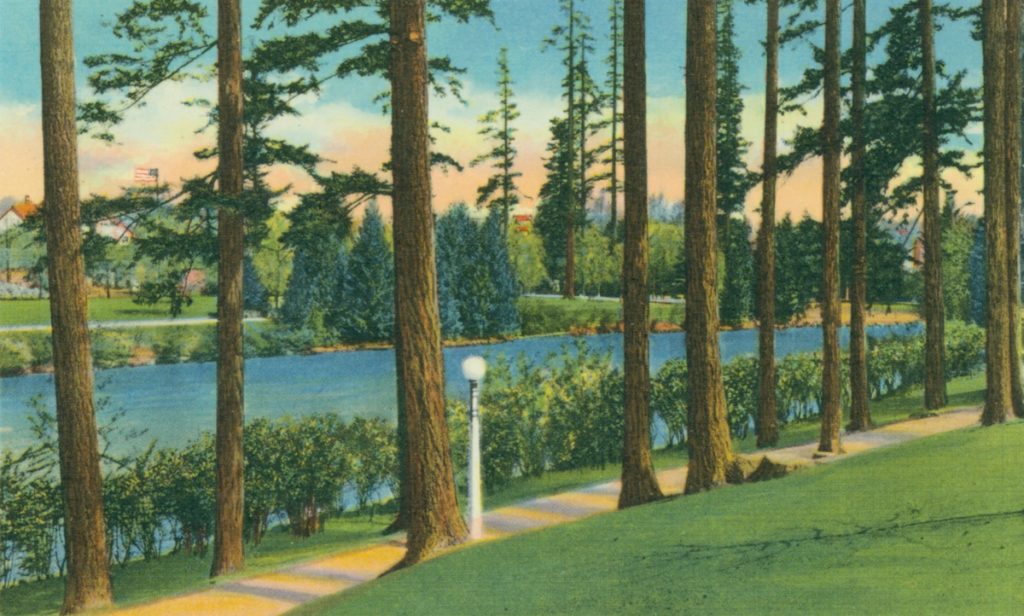
Written By Marion Rosas / Designer
